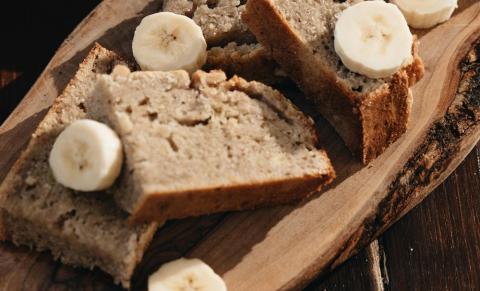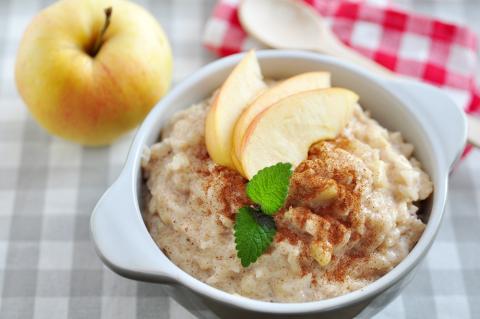- 4 (200g) Free Range Eggs
- 1 (160g) Red Pepper
- 1 Teaspoon (6g) Reduced Sugar And Salt Tomato Ketchup
- 1 Can (400g) Chopped Tomatoes
- 1 Tablespoon (10g) Vegetable Oil
- 4 Slices (144g) Wholemeal Bread
- 1 to taste Pinch (1g) Ground Black Pepper
Ingredients
Allergy Disclaimer
Always check the label of each ingredient for allergy warnings.
Method
- Wash, de-seed and finely chop the pepper.
- Fry the pepper in a large frying pan in the oil until it is tender, then add the chopped tomatoes and tomato ketchup. Simmer for 5-10 minutes.
- Make 4 'holes' in the tomato and pepper mix, and crack an egg into each one. Continue to cook gently until the eggs are done to your liking.
- Meanwhile, toast the bread.
- Serve the eggs and tomatoes on toast, sprinkled with black pepper to taste.
Cost Saver Tips
You can buy frozen mixed peppers cheaply; they would work well in this dish. You could also add courgettes, cherry tomatoes or jalapeno peppers if you like spicy food.
Tips for Kids
Use tomatoes on their own if peppers are not popular, or add some sweetcorn.
Nutritional Information
Based on a single serving of 213g (% of an adult's reference intake)
Energy
208 kcals ( 10 %)
873 kJ ( 10 %)
Fat
1.8 g ( 9 %)
Saturates
20 g ( %)
Sugar
7 g ( 8 %)
Salt
0.7 g ( 11 %)
Detailed nutritional information
| Per 100g | Per 213g serving | |
|---|---|---|
| Energy Kcals | 98 | 208 |
| Energy Kj | 410 | 873 |
| Protein | 5.4 g | 11.6 g |
| Total Fat | g | g |
| Saturated Fat | 0.8 g | 1.8 g |
| Carbohydrates | 9.4 g | 20 g |
| Total Sugars | 3.3 g | 7 g |
| NSP Fibre | 1.5 g | 3.2 g |
| Sodium | 125 mg | 267 mg |
| Salt | 0.3 g | 0.7 g |
Find out about nutritional labelling
Nutrition labels on the front of packaging
- Most of the big supermarkets and many food manufacturers display nutritional information on the front of pre-packed food.
- Front of pack nutrition labels provide information on the number of grams of fat, saturated fat, sugars and salt and the amount of energy (in kJ and kcal) in a serving or portion of a recipe.
- The labels also include information about reference intakes (expressed as a percentage) which are guidelines about the approximate amount of particular nutrients and energy required for a healthy diet.
- The colour coding tells you at a glance if the food has high (red), medium (amber) or low (green) amounts of fat, saturated fat, sugars and salt.
- The more greens on the label, the healthier the choice
- Amber means neither high nor low, so you can eat foods with all or mostly ambers on the label most of the time.
- Reds on the label means the food is high in that nutrient and these are the foods we should cut down on. Try to eat these foods less often and in small amounts.
Food shopping tips
If you’re trying to decide which product to choose, check to see if there's a nutrition label on the front of the pack. This will help you to quickly assess how your choices stack up. You will often find a mixture of red, amber and green colour coding for the nutrients. So when you're choosing between similar products, try to go for more greens and ambers and fewer reds if you want to make a healthier choice.
 Activities & Play
Activities & Play Behaviour
Behaviour Childcare
Childcare Development & Growing Up
Development & Growing Up Family, Friends & Relationships
Family, Friends & Relationships Feeding Your Baby
Feeding Your Baby Food & Eating
Food & Eating Health & Safety
Health & Safety Mental Health & Wellbeing
Mental Health & Wellbeing Money & Work
Money & Work Online Behaviour & Safety
Online Behaviour & Safety Pregnancy & First Days
Pregnancy & First Days School & Education
School & Education Sleep
Sleep



















